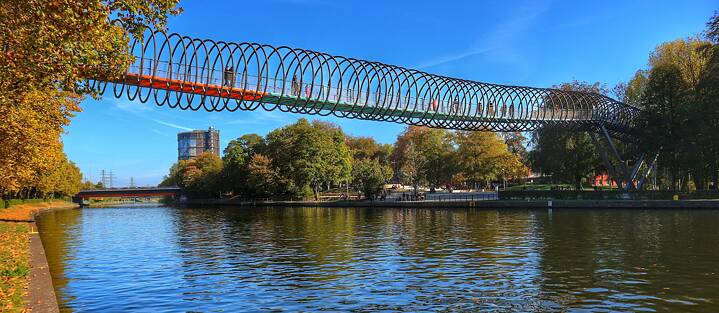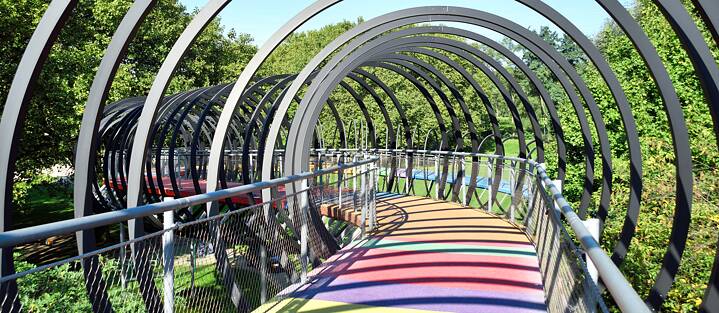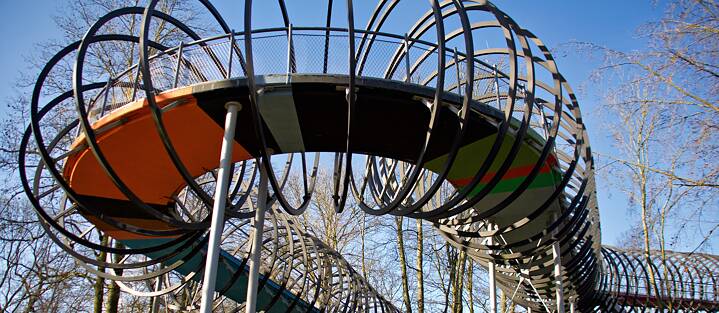Detours | Slinky Springs to Fame
A Bridge of Many Colours

There’s no need to travel to London or Venice to cross one of Europe’s most impressive bridge constructions. Simply go to Oberhausen instead, where the “Slinky Springs to Fame” is suspended across the Rhine-HerneCanal.
By Daniel Hinz
Your eyes are not deceiving you: an oversized Slinky is indeed stretched across the canal. This bridge in the German city of Oberhausen, named “Slinky Springs to Fame”, was inspired by the Slinky spring toy. 406 metres long, thepedestrian bridge across the Rhine-Herne Canal is both playful and enchanting.
Admittedly, there are a number of impressive bridges around the world. But why travel to London to see the Millennium Bridge if such a unique bridge can also be found in Oberhausen in the German state of North-Rhine Westphalia? Of course, it may be a bit scary that the bridge appears so unstable and wobbles on all sides when you stand on it. But that’s quite normal, as bridges need a certain amount of “play” in order not to collapse.
Designed by the artist Tobias Rehberger and comprising 469 aluminium coils, the “Slinky” enables pedestrians to strollfrom Kaisergarten Park across to Emscher Island. It was then built and completed in 2011 by the same Stuttgart-based firm of engineers that is also responsible for the new World Trade Center in New York – meaning that the Slinky has exuded a touch of cosmopolitan flair ever since its construction. Also known as the Rehberger Bridge, it is to be found inside the Schlosspark – which also features an animal enclosure, museum and plenty of nature.
The surface of the bridge is made of a material rather like the Tartan Track that many of us will be familiar with from our PE lessons at school, and it features a total of 16 different colours. It is brightly lit at night, though always at dusk rather than at a specific time. It is then illuminated by 293 lamps built into the bridge, with colours including red, orange, blue,turquoise, purple and green. This nighttime sci-fi atmosphere is a nod to the traditionally industrial city of Oberhausen and an appealingly colourful way of bridging the gap between the city’s past – characterized by mines, steelworks and the chemical industry – and its present.
Detours
What does Görliwood mean, why can you find a piece of the Caribbean in Bavaria and where can you dance in front of bucket wheel diggers? In our series we take you on a trip each month to somewhere in Germany that you may not yet know but should definitely be introduced to. We reveal places that are not to be found on the usual tourist trails. Are you ready for a bit of a detour?



